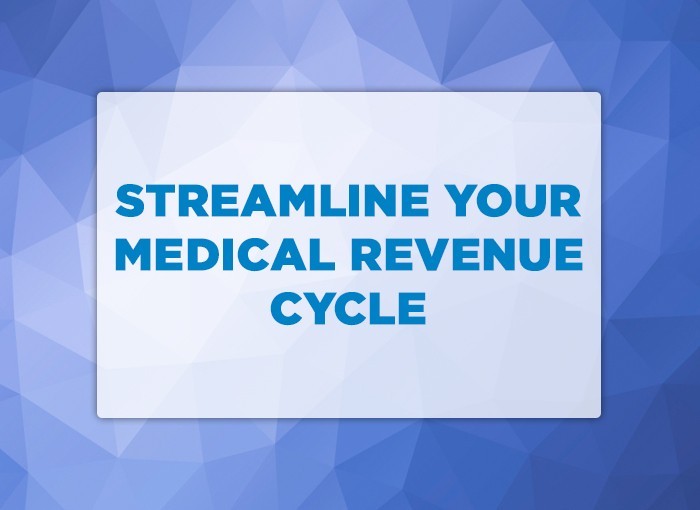How to streamline your medical revenue cycle?
Health care professionals have always relied on revenue cycle management (RCM) to manage their administrative and clinical functions for a smooth flow of revenue cycle from beginning to end. RCM is a payment tracking and managing process that captures, collects and manages payment from the start to finish. An effective revenue cycle is required for the maximum reimbursement for healthcare services. For succeeding in making clinics the best-rated ones, healthcare professionals need to employ innovative ways and need to deliver high-quality care for a better patient experience. All of these actions contribute to the growth and fame of health care organizations. Thus, a good medical billing system that is run efficiently becomes of prime importance to achieve these goals.
Without an experienced administrative staff or an effective organization responsible for managing the revenue cycle, it becomes incredibly difficult for a healthcare leader to minimize errors, follow the rules and regulations correctly, keep up with the new norms, and provide quality time to the patient. All such flaws in the payment system could mean not getting complete payment or partial payment. Medical billing companies provide comprehensive payment management in the healthcare system. These companies are dedicated to helping oncologists, physicians, hospitals, orthopedic surgeons, and free-standing emergency centers so that their business could be maximized and they can grow and prosper by providing the best services to their patients. Thus, outsourcing the medical billing system is the best way to grow your practice.
Before knowing the tips to streamline the medical billing process, have a look at how revenue cycles start and end.
Usually, the medical billing cycle starts when a patient books an appointment with the doctor for getting a clinical service. The administrative staff of the hospital collects the data related to the patient to confirm the patient’s identity. After registration, there is a review and authorization process of provided documents, and deductibles of the patient are collected. Afterwards, these documents are used for charge capture information about the patient’s insurance. Lastly, after providing services to the patient, all the data is collected and then sent to the billing system where a claim is made and submitted to the active health insurance provider. Lastly, when the claim is paid completely by managing all patient deductibles and charges – the revenue cycle gets completed.
In this post, we will provide some tips to streamline the medical billing process that would help you to grow your business:
1) Have all the information of the patient required during the medical billing process:
This is the best way for efficient billing, as these days, most hospitals and clinics have much more relevant data than just information about the patient’s active health insurance provider, contact number, and personal address. Access to information like preferred time of contact, email addresses, and other info can strengthen the relationship between the doctor and the patients. It also enhances the possibility of contacting the patient about important information in less time which means instant solutions. Moreover, patients also feel good and appreciate the clinics for utilizing this effective method. However, it is also important that every health care professional’s clinic follows HIPAA regulations, particularly related to privacy. Efficient medical billing can focus on the most important aspects of the healthcare system and thus provides the best possible patient care!
2) A good health care clinic always put the patient at the center of their focus:
Healthcare clinics can have a good medical billing process but before that, they need to establish better patient relationship management. If the clinic has a staff that prioritizes the requirements of patients and believes in improving patient satisfaction then it helps build a strong relationship and loyalty with the patient. For this, staff needs to give both verbal and written descriptions to patients about their financial responsibility, copays, deductions, the preferred mode of pay, right time of their visit among others. Lack of good relations may lead to intimidation, confusion, and frustration that would affect the status of the organization.
3) Try to improve the charge capturing and coding
For healthcare and hospitals, it is necessary to develop and implement processes that can capture revenues for services availed by the patient. Some of the areas that can easily escape charge capturing in the billing process are outpatient nursing procedures like injections provided to patients. Other times, pharmacy revenue is also missed due to errors in reporting of units. Thus health care providers like nurses and pharmacists should check for missed charges and other documents for appropriate reporting of missed payments.
4) Update technology
Most of the time, many claims can be denied automatically when you submit them. This may be because of outdated technology, so you need to keep clinics up to date with diagnostic codes and requirements. It takes a lot of time to check for unpaid claims and resubmit them. If the clinic has automated software systems, they can streamline eligibility checks, prior authorizations, medical coding, and make you aware of the errors that need to be resolved before submitting the claims. Up to date technology may cut down the time and can give you reimbursements faster.




